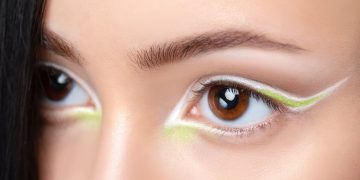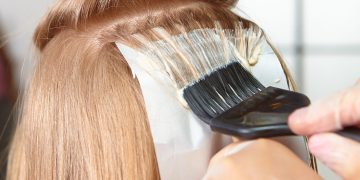Finding the perfect foundation shade can feel like a daunting task, especially with the variety of options available. Choosing the right foundation can make a world of difference in your makeup routine, helping to create a flawless base that complements your natural skin tone and undertones. In this guide, we’ll walk you through how to match foundation to your skin tone, ensuring that you achieve a seamless and natural-looking finish every time.
Understanding Your Skin Tone and Undertones
Before picking a foundation shade, it’s important to understand two key components: skin tone and undertone. While these terms may sound similar, they refer to different aspects of your complexion.
- Skin Tone refers to the natural color of your skin’s surface, which can range from fair to medium to deep. Your skin tone may change with exposure to sunlight or with the seasons, but it remains relatively stable over time.
- Undertone is the subtle hue that lies beneath the surface of your skin, affecting its overall appearance. Your undertone will stay consistent throughout your life, and it is the primary factor in choosing the right foundation.
Types of Skin Tones
Skin tones are generally categorized into three main types:
- Fair: This skin tone is typically very light and often burns easily. It may have a pink or porcelain appearance.
- Medium: Medium skin tones range from light to tan and tend to tan more easily than fair skin. This tone may have a yellow, olive, or golden undertone.
- Deep: Deep skin tones are darker and can have a rich brown or ebony hue. This skin tone tends to be deeper and may have red, blue, or purple undertones.
When choosing a foundation, it’s essential to identify your skin tone so that you can find the correct shade range. Many makeup brands offer foundation shades labeled as “fair,” “medium,” or “deep,” which serve as starting points to help you narrow down your options.
Identifying Your Undertones
Understanding your undertone is the most critical step when selecting foundation, as it influences how the product will look on your skin. There are three main undertone categories:
- Cool Undertones: People with cool undertones usually have a pink, red, or blue hue beneath their skin. If you burn easily in the sun, you likely have cool undertones. Cool undertones tend to look best with foundations that have a pink, rosy, or blue base.
- Warm Undertones: Those with warm undertones have a golden, yellow, or peachy hue beneath their skin. If your skin tans easily and rarely burns, you likely have warm undertones. Warm undertones usually pair well with foundations that have a yellow or golden base.
- Neutral Undertones: Neutral undertones fall somewhere between cool and warm, and they have a balance of pink and yellow hues. People with neutral undertones can wear a wide variety of foundation shades, but they tend to look best in foundations that are neither too pink nor too yellow.
To determine your undertone, here are a few ways to test it:
- The Vein Test: Look at the veins on the inside of your wrist. If they appear blue or purple, you likely have cool undertones. If they appear green, you likely have warm undertones. If you have trouble determining whether they’re blue or green, you might have neutral undertones.
- Jewelry Test: Think about whether gold or silver jewelry looks better against your skin. Silver jewelry complements cool undertones, while gold jewelry flatters warm undertones. If both look equally good on you, you may have neutral undertones.
- Sun Exposure: If you tan easily and rarely burn, you likely have warm undertones. If you burn first and tan slowly, you likely have cool undertones. If you tan without much redness, neutral undertones are likely.

How to Choose the Right Foundation Shade
Once you’ve determined your skin tone and undertone, selecting the perfect foundation shade becomes much easier. Here’s how you can find the right match:
1. Test Before You Buy
Testing foundation shades before purchasing is essential, as the color of the foundation in the bottle may not always match how it looks on your skin. Here’s how to test:
- Apply a small amount of foundation along your jawline or the center of your cheek, blending it downward toward your neck. This area is ideal because it’s typically where your skin tone and undertone are most visible.
- Check the color in natural daylight. Lighting in stores can be deceiving, so seeing how the foundation looks in natural light will give you a better idea of how well it matches.
- Blend the foundation in and see if it disappears into your skin. The right foundation shade should blend seamlessly without leaving a noticeable line or contrast between your face and neck.
2. Match Your Foundation to Your Neck, Not Your Face
Your face is often a different color than your neck, especially if you’re someone who wears sunscreen on your face but not on your neck. To get a consistent look, always match your foundation to your neck and chest. The skin on your face might be a different shade due to sun exposure or redness, so blending your foundation with your neck ensures a more natural, uniform appearance.
3. Consider Seasonal Changes
Your skin tone may shift with the seasons. For example, you might have a lighter complexion in winter and a deeper, more tan complexion in the summer. It’s a good idea to have two foundation shades: one for winter and one for summer. During the summer months, you can also mix your foundations to create a custom blend that works for your slightly darker skin tone.
4. Don’t Forget the Formula
The formula of your foundation is just as important as the shade. Different formulas work better for different skin types, so consider your skin’s needs when choosing a foundation. Here are some options:
- Matte Foundations are great for oily skin, as they control shine and provide a smooth, long-lasting finish.
- Hydrating Foundations are best for dry skin because they provide moisture and give a dewy, radiant finish.
- Powder Foundations work well for combination or oily skin, offering light coverage and a matte finish.
- BB Creams or Tinted Moisturizers offer light to medium coverage and a natural, glowy finish, ideal for those with dry or normal skin.
What to Do If You Can’t Find Your Perfect Match
If you’re having trouble finding the perfect foundation shade, here are a few tips to help:
- Mix Two Shades: Sometimes, you may need to combine two different shades to create the ideal color. Don’t hesitate to mix a lighter and darker shade to match your undertones and achieve a flawless look.
- Look for Custom Foundation Brands: Some brands offer customized foundations where you can provide your skin’s undertone and tone, and they’ll create a foundation color specifically for you.
- Try Foundation Samples: Many makeup stores offer free samples so you can test out shades before committing to a full-size product. This gives you a chance to wear the foundation throughout the day and see how it works with your skin.
How to Make Your Foundation Last
Once you’ve found the perfect shade, it’s essential to make your foundation last. Here are a few tips for ensuring long-lasting coverage:
- Prime Your Skin: Apply a primer before your foundation to create a smooth base and help it adhere better.
- Set with Powder: Use a translucent setting powder to lock your foundation in place, preventing it from moving or melting throughout the day.
- Use Setting Spray: A setting spray can help to hold your makeup in place and give you a fresh finish.
- Touch Up Throughout the Day: Keep a small amount of powder or blotting papers in your bag for quick touch-ups, especially if you have oily skin.
Conclusion
Matching your foundation to your skin tone and undertones is key to achieving a flawless, natural-looking base. By understanding your skin type, experimenting with different shades, and using the right techniques, you’ll be able to find the perfect foundation shade for your complexion. Remember, foundation is meant to enhance your natural beauty, so don’t be afraid to try different shades and formulas until you find the one that works best for you.












































